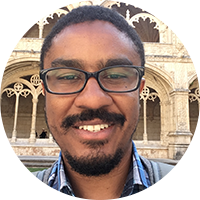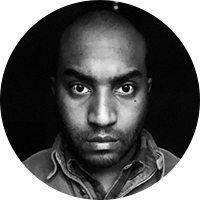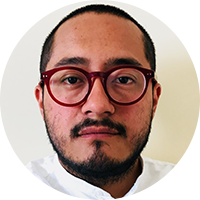-
Membership
Membership
Anyone with an interest in the history of the built environment is welcome to join the Society of Architectural Historians -
Conferences
Conferences
SAH Annual International Conferences bring members together for scholarly exchange and networking -
Publications
Publications
Through print and digital publications, SAH documents the history of the built environment and disseminates scholarship -
Programs
Programs
SAH promotes meaningful engagement with the history of the built environment through its programsMember Programs
-
Jobs & Opportunities
Jobs & Opportunities
SAH provides resources, fellowships, and grants to help further your career and professional life -
Support
Support
We invite you to support the educational mission of SAH by making a gift, becoming a member, or volunteering -
About
About
SAH promotes the study, interpretation, and conservation of the built environment worldwide for the benefit of all
SAH Names the Five Recipients of the 2022 SAH IDEAS Research Fellowship
Jan 11, 2022
by
SAH News
The Society of Architectural Historians is pleased to announce the recipients of the 2022 SAH IDEAS Research Fellowship, a new award intended to support a cohort of five emerging scholars per year who self-identify as members of marginalized groups. Part of the SAH IDEAS Initiative, these yearlong fellowships aim to support research that challenges existing paradigms and represents previously under-recognized and/or unsupported directions for architectural history as researched, thought, or applied. In addition to providing research support, the fellowships are intended to create mentored cohorts to support the work of emerging scholars.
The SAH IDEAS Committee is deeply grateful to the senior scholars who have generously agreed to contribute their time to support each of the five fellowship recipients. Throughout the year, the cohort will meet with each other regularly to foster relationship building and encourage peer support. The fellowship includes one year of SAH membership and a $1,000 award for research support.
The 2022 SAH IDEAS Research Fellowship recipients are listed below along with the names of their mentors.
 Dwight Carey is an assistant professor in the Department of Art and the History of Art at Amherst College. He is also a historian of modern world architecture who specializes on issues of slavery, colonialism, and empire. In the past, he has taught in the Department of French Studies at Smith College. Currently, he is working on his book, The Island of Bound Masters: Slavery and Construction Labor in Mauritius. Following the enslaved masons, carpenters, blacksmiths, and unskilled workers who developed the commercial infrastructure of this western Indian Ocean island with no native population, this book chronicles the ecological knowledge of a diverse group of slaves. Over the course of 10 years, Professor Carey has undertaken field and archival research in Mauritius as well as archival work and scientific analyses of building remnants in the United States, the United Kingdom, France, and the Netherlands. Having published articles on Mauritian architecture and slavery in Grey Room and Art in Translation, Professor Carey is finishing a book that builds upon such scholarship while also engaging never-before published findings on the building materials, enslaved construction workers, and colony history of Mauritius. Overall, his research seeks to change how scholars and the public understand the link between slavery, environmental knowledge, and colonial architectural history in Mauritius and around the world.
Dwight Carey is an assistant professor in the Department of Art and the History of Art at Amherst College. He is also a historian of modern world architecture who specializes on issues of slavery, colonialism, and empire. In the past, he has taught in the Department of French Studies at Smith College. Currently, he is working on his book, The Island of Bound Masters: Slavery and Construction Labor in Mauritius. Following the enslaved masons, carpenters, blacksmiths, and unskilled workers who developed the commercial infrastructure of this western Indian Ocean island with no native population, this book chronicles the ecological knowledge of a diverse group of slaves. Over the course of 10 years, Professor Carey has undertaken field and archival research in Mauritius as well as archival work and scientific analyses of building remnants in the United States, the United Kingdom, France, and the Netherlands. Having published articles on Mauritian architecture and slavery in Grey Room and Art in Translation, Professor Carey is finishing a book that builds upon such scholarship while also engaging never-before published findings on the building materials, enslaved construction workers, and colony history of Mauritius. Overall, his research seeks to change how scholars and the public understand the link between slavery, environmental knowledge, and colonial architectural history in Mauritius and around the world.
Louis P. Nelson, Vice Provost for Academic Outreach and Professor of Architectural History at the University of Virginia School of Architecture, will mentor Dwight Carey.
 Robert Louis Brandon Edwards is the product of strong Black women who left the oppressive southern landscape of Virginia and moved to Harlem during the Great Migration. He is also the proud great-great-great-grandson of a United States Colored Troop who fought for the freedom of African Americans during the Civil War.
Robert Louis Brandon Edwards is the product of strong Black women who left the oppressive southern landscape of Virginia and moved to Harlem during the Great Migration. He is also the proud great-great-great-grandson of a United States Colored Troop who fought for the freedom of African Americans during the Civil War.
Edwards holds a Bachelor of Architecture from the State University of New York (SUNY) and a master’s in architectural history and certificate in historic preservation from the University of Virginia (UVA). He is an architectural and cultural historian at Nelson Byrd Woltz Landscape Architects and is currently working on multiple projects including the National Memorial to the Underground Railroad. Through writing, graphic, and oral storytelling, Edwards’ work delivers different narratives and perspectives at the intersection of race, movement, and architecture and informs preservation, interpretation, and design. Edwards has also worked in collections management with the National Park Service at Appomattox Court House National Historical Park and with the National Trust for Historic Preservation at Woodlawn & Pope-Leighey House. His experience also includes hands-on restoration work at Thomas Jefferson’s Monticello, William Fitzhugh’s Chatham Manor, UVA’s dormitories, and as an architectural historian on an archeological survey in Greece.
Edwards has been published in the New York Beacon and his essay “Architecture in Music, Architecture in Film” was recently accepted by the Athens Institute for Education and Research. He currently serves on the Board of Architectural Review for the city of Charlottesville.
Mohammad Habib Reza, Associate Professor in the Department of Architecture at Brac University, will mentor Robert Louis Brandon Edwards.
 Sujin Eom is a scholar of architectural and urban studies working at the intersection of race, migration, and the built environment. She is intellectually invested in expanding the scope of postcolonial urban studies by excavating what Edward Said phrased as “overlapping territories and intertwined histories” across seemingly discrete geographic entities. Drawing from archival research and historical ethnography, her research examines transnational connections of ideas and things which have received little scholarly attention in architectural and urban history. She is currently completing her first book, Traveling Chinatowns: Migration, Proximity, Violence in the Transpacific Asias, which situates ‘Chinatown’ as an imaginative and material space within the transpacific history of settler colonialism and violence. With research interests in science and technology studies, postcolonial studies, and infrastructures, her second book project investigates elevated highways as a traveling urban form that reveals how the racial and class inequity built into the U.S. interstate highway system crossed the Pacific to reconfigure spaces of inclusion and exclusion in Asian cities. An architect and architectural historian by training, she has worked for participatory community design and archiving projects in Asia and teamed up with visual artists to mount exhibitions that addressed socio-spatial issues facing Asian cities, ranging from urban rights of women with disabilities to gentrification in downtown Seoul. In collaboration with the SAH Asian American and Diasporic Architectural History Affiliate Group and the Cooper Hewitt Smithsonian Design Museum, she will embark upon a new project that collects and documents the work of American architects of Korean ancestry.
Sujin Eom is a scholar of architectural and urban studies working at the intersection of race, migration, and the built environment. She is intellectually invested in expanding the scope of postcolonial urban studies by excavating what Edward Said phrased as “overlapping territories and intertwined histories” across seemingly discrete geographic entities. Drawing from archival research and historical ethnography, her research examines transnational connections of ideas and things which have received little scholarly attention in architectural and urban history. She is currently completing her first book, Traveling Chinatowns: Migration, Proximity, Violence in the Transpacific Asias, which situates ‘Chinatown’ as an imaginative and material space within the transpacific history of settler colonialism and violence. With research interests in science and technology studies, postcolonial studies, and infrastructures, her second book project investigates elevated highways as a traveling urban form that reveals how the racial and class inequity built into the U.S. interstate highway system crossed the Pacific to reconfigure spaces of inclusion and exclusion in Asian cities. An architect and architectural historian by training, she has worked for participatory community design and archiving projects in Asia and teamed up with visual artists to mount exhibitions that addressed socio-spatial issues facing Asian cities, ranging from urban rights of women with disabilities to gentrification in downtown Seoul. In collaboration with the SAH Asian American and Diasporic Architectural History Affiliate Group and the Cooper Hewitt Smithsonian Design Museum, she will embark upon a new project that collects and documents the work of American architects of Korean ancestry.
Ken Tadashi Oshima, Professor in the Department of Architecture at the University of Washington and past President of SAH, will mentor Sujin Eom.
 Matthew Gin is a visiting assistant teaching professor in the School of Architecture at Northeastern University. A historian of eighteenth-century European architecture and visual culture, he is interested in the impact of politics on design production and architecture-adjacent spatial practices like ritual. His current book project is an expanded history of ephemeral festival architecture in France from the seventeenth century to the Revolution that claims a meaning for these objects beyond their function as propaganda. Using contracts, drawings, and novels to reconstruct these decorations within the broader context of the Enlightenment, the book investigates pageant décor as unique forms of infrastructure that relied on early technologies of reuse and discursive objects that animated debates about the bounds of architectural practice and good governance. As part of centering marginalized figures within architectural culture, the project also examines the relationship between architects and the overlooked artisans and laborers who were crucial to the production of pageant decorations.
Matthew Gin is a visiting assistant teaching professor in the School of Architecture at Northeastern University. A historian of eighteenth-century European architecture and visual culture, he is interested in the impact of politics on design production and architecture-adjacent spatial practices like ritual. His current book project is an expanded history of ephemeral festival architecture in France from the seventeenth century to the Revolution that claims a meaning for these objects beyond their function as propaganda. Using contracts, drawings, and novels to reconstruct these decorations within the broader context of the Enlightenment, the book investigates pageant décor as unique forms of infrastructure that relied on early technologies of reuse and discursive objects that animated debates about the bounds of architectural practice and good governance. As part of centering marginalized figures within architectural culture, the project also examines the relationship between architects and the overlooked artisans and laborers who were crucial to the production of pageant decorations.
Gin’s work has been supported by the UCLA Center for 17th- and 18th-Century Studies, the Center for European Studies at Harvard University, and the Canadian Centre for Architecture. His research has been awarded the Society for Court Studies Essay Prize and the Mary Vidal Memorial Award from the Historians of Eighteenth-Century Art and Architecture. He has a BA (Art History) and a BMus (Baroque Flute Performance) from Oberlin College, an MED (Architectural History) from Yale University, and an AM and a PhD (Architecture) from Harvard University.
Nicola Courtright, William McCall Vickery 1957 Professor of the History of Art and Chair of Art and the History of Art at Amherst College, will mentor Matthew Gin.
 Alberto Ortega Trejo is a Mexican artist and architectural designer based in Chicago and Mexico City. Through text, installation and video, his work investigates the development of the Mexican modern state through architecture, Indigenous representation and ecological catastrophes. He holds a Bachelor of Science in Architecture from Universidad de La Salle (Mexico) and a Master of Fine Arts in Studio with a focus in Architecture from the School of the Art Institute of Chicago. His research practice has been supported by The Andrew W. Mellon Foundation, Jumex Foundation for Contemporary Art, and the American Institute of Architects. His creative work has been exhibited at venues like Ca’Foscari Zattere, a collateral site of Dimensions of Citizenship at the 18th Venice Architecture Biennale; Fundación Andreani for BienalSur in Buenos Aires, Argentina; Space P11 in Chicago; and Centro de Arte y Filosofía in Mexico. He is currently a Curator in Residence for the Farnsworth House and manages the Katz Center for Mexican Studies at the University of Chicago.
Alberto Ortega Trejo is a Mexican artist and architectural designer based in Chicago and Mexico City. Through text, installation and video, his work investigates the development of the Mexican modern state through architecture, Indigenous representation and ecological catastrophes. He holds a Bachelor of Science in Architecture from Universidad de La Salle (Mexico) and a Master of Fine Arts in Studio with a focus in Architecture from the School of the Art Institute of Chicago. His research practice has been supported by The Andrew W. Mellon Foundation, Jumex Foundation for Contemporary Art, and the American Institute of Architects. His creative work has been exhibited at venues like Ca’Foscari Zattere, a collateral site of Dimensions of Citizenship at the 18th Venice Architecture Biennale; Fundación Andreani for BienalSur in Buenos Aires, Argentina; Space P11 in Chicago; and Centro de Arte y Filosofía in Mexico. He is currently a Curator in Residence for the Farnsworth House and manages the Katz Center for Mexican Studies at the University of Chicago.
Spyros Papapetros, Associate Professor of History and Theory of Architecture at Princeton University School of Architecture, will mentor Alberto Ortega Trejo.


